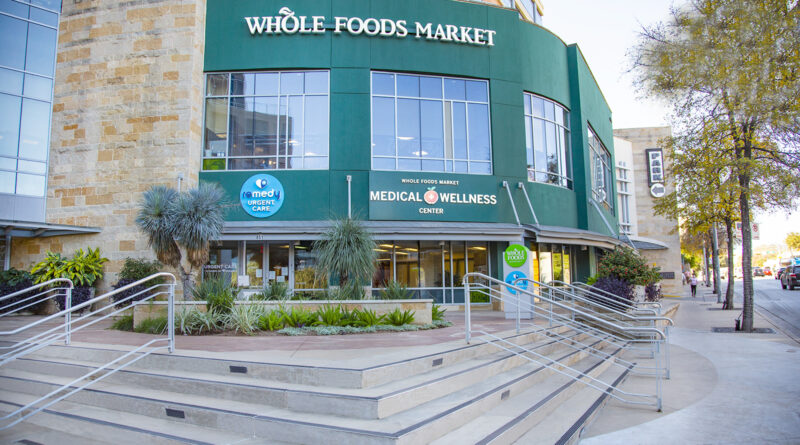Whole Foods Market Founded in Austin Texas
Whole Foods Market, the renowned American multinational supermarket chain, is synonymous with organic and natural foods. Known for its commitment to high-quality, minimally processed products, Whole Foods has grown from a small health food store in Austin, Texas, to a global leader in the organic and natural foods industry. The journey of Whole Foods Market is a fascinating tale of vision, innovation, and dedication to sustainability and community.
The Origins: SaferWay and Clarksville Natural Grocery
The story of Whole Foods Market begins in the late 1970s with two visionary individuals: John Mackey and Renee Lawson Hardy. In 1978, Mackey and Hardy, both in their mid-20s, decided to open a small health food store in Austin, Texas. They pooled together $45,000, including $10,000 borrowed from family and friends, to launch their venture. The store, named SaferWay, was located in a 3,000-square-foot space in an old Victorian house.
SaferWay was founded on the principles of selling natural, organic, and whole foods, which at the time were still niche markets. The store offered a range of products, including fresh produce, bulk grains, and supplements, appealing to a growing number of consumers interested in healthier eating habits.
At the same time, Craig Weller and Mark Skiles opened Clarksville Natural Grocery, another small health food store in Austin. Like SaferWay, Clarksville Natural Grocery focused on selling natural and organic products. The two stores quickly became competitors, but it wasn’t long before the owners realized that joining forces would be more beneficial than competing.
The Merger and the Birth of Whole Foods Market
In 1980, Mackey and Hardy of SaferWay decided to merge their business with Weller and Skiles’ Clarksville Natural Grocery. The merger resulted in the opening of the first Whole Foods Market on September 20, 1980, in Austin. The new store was much larger than either of the previous stores, occupying 10,500 square feet, making it one of the largest natural food supermarkets in the United States at the time.
The first Whole Foods Market offered a wide selection of organic and natural products, including fresh produce, bulk grains, dairy, and meat, as well as health supplements and natural body care items. The store quickly gained a loyal customer base, thanks to its commitment to high-quality products and customer service.
However, just a year after opening, Whole Foods Market faced a major setback when a devastating flood hit Austin in May 1981. The store was heavily damaged, and many of its products were lost. Despite this, the community rallied around Whole Foods, with customers, employees, and vendors helping to clean up and reopen the store. This event strengthened the bond between Whole Foods and the Austin community and set the stage for the company’s future growth.
Expansion and Growth in the 1980s and 1990s
Following the successful reopening of the Austin store, Whole Foods Market began to expand. The company opened its second store in Houston, Texas, in 1984, followed by stores in Dallas, New Orleans, and Palo Alto, California. This expansion was fueled by the growing demand for organic and natural foods, as more consumers became aware of the benefits of healthy eating.
Whole Foods Market also began acquiring other natural food stores to accelerate its growth. In 1988, the company acquired Whole Food Company in New Orleans, expanding its presence in the southeastern United States. In 1992, Whole Foods made its first major acquisition by purchasing Wellspring Grocery, a seven-store chain in North Carolina. This acquisition marked the beginning of Whole Foods’ strategy of acquiring regional natural food chains to increase its footprint.
The 1990s were a period of rapid growth for Whole Foods Market. The company went public in 1992, raising $23 million through its initial public offering (IPO). This capital allowed Whole Foods to continue its expansion across the United States, acquiring additional natural food chains and opening new stores in key markets.
One of the most significant acquisitions during this period was the purchase of Fresh Fields, a chain of natural food stores in the Mid-Atlantic and Northeast regions, in 1996. This acquisition significantly expanded Whole Foods’ presence on the East Coast and established the company as a national leader in the natural foods industry.
Becoming a Global Leader in Natural and Organic Foods
As Whole Foods Market entered the 2000s, the company continued to expand both domestically and internationally. In 2002, Whole Foods opened its first store in Canada, marking its entry into the international market. This was followed by the opening of stores in the United Kingdom in 2004, further solidifying Whole Foods as a global brand.
Whole Foods Market also continued to grow through strategic acquisitions. In 2007, the company made one of its largest acquisitions by purchasing Wild Oats Markets, a natural and organic food chain with over 100 stores. This acquisition allowed Whole Foods to increase its market share and expand into new regions.
Throughout its expansion, Whole Foods Market maintained its commitment to quality, sustainability, and ethical sourcing. The company established strict standards for the products it sold, including a ban on artificial preservatives, colors, and flavors, and a commitment to selling only sustainably sourced seafood. Whole Foods also became a leader in promoting organic agriculture, fair trade, and animal welfare standards.
In addition to its focus on quality products, Whole Foods Market also emphasized environmental sustainability in its operations. The company implemented green building practices in its stores, such as using energy-efficient lighting and refrigeration, and reducing waste through recycling and composting programs. Whole Foods also became one of the first major retailers to eliminate plastic bags from its stores, replacing them with reusable bags and offering incentives to customers who brought their own.
Challenges and the Amazon Acquisition
Despite its success, Whole Foods Market faced challenges in the 2010s as competition in the natural and organic food industry increased. The rise of other organic and natural food retailers, as well as the expansion of organic offerings in conventional grocery stores, put pressure on Whole Foods to maintain its market share.
In 2017, Whole Foods Market made headlines when it was acquired by Amazon for $13.7 billion. The acquisition marked a new chapter for Whole Foods, as it became part of the e-commerce giant’s growing empire. The acquisition also brought changes to Whole Foods’ operations, including price reductions on key products, the integration of Amazon’s Prime membership benefits, and the introduction of online grocery delivery services.
While the acquisition by Amazon has brought new opportunities for Whole Foods Market, the company continues to face challenges in a competitive retail environment. However, Whole Foods remains committed to its core values of quality, sustainability, and community, which have been the foundation of its success.
The Legacy of Whole Foods Market
Today, Whole Foods Market operates over 500 stores across the United States, Canada, and the United Kingdom. The company has become a household name, known for its high standards and commitment to natural and organic foods. Whole Foods has also played a significant role in shaping the natural foods industry, influencing consumer preferences and raising awareness about the importance of sustainable and ethical food production.
As Whole Foods Market looks to the future, the company continues to innovate and adapt to changing consumer needs. Whether through its ongoing commitment to quality and sustainability, its embrace of new technologies, or its focus on community engagement, Whole Foods Market remains a leader in the organic and natural foods industry, staying true to the vision that began in a small health food store in Austin, Texas.
Discover more from City Towner
Subscribe to get the latest posts sent to your email.




